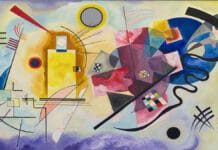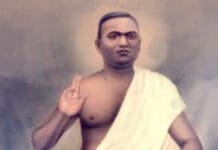Movement Poetry is a term used to describe a group of British poets who came to prominence in the 1950s. They shared a common desire to break away from the modernist traditions of the early 20th century, seeking instead a return to more traditional forms and themes in poetry. The Movement was not an official or formalised group but a collective label for poets who expressed similar ideas and approaches to their craft.
The Movement emerged in post-war Britain, a time of social and cultural change. The country was recovering from the devastation of World War II, and there was a general desire for stability and normalcy. This translated into a reaction against the experimental and often obscure techniques of modernist writers like T S Eliot and Ezra Pound. The Movement poets sought to return to clarity, simplicity, and directness in their work.
Reaction Against Modernism
Movement Poetry was largely a reaction against the high modernism that dominated the literary scene in the first half of the 20th century. Modernist poets often used fragmented structures, obscure references, and complex imagery, which the Movement poets found elitist and inaccessible. Movement poets favoured a more straightforward, accessible style rooted in everyday language and experiences.
Key Characteristics
Formal Structure
Movement poets favoured traditional forms such as the sonnet, the quatrain, and other regular stanzaic forms. They often employed rhyme and meter, seeing these as essential elements of sound poetry.
Clarity and Simplicity
The language of Movement Poetry is clear, precise, and unadorned. The poets avoided the obscure and the esoteric, aiming for direct communication with the reader.
Focus on the Ordinary
Movement poets often wrote about everyday life and ordinary experiences. They were less concerned with grand themes or lofty ideas and more interested in the details of daily existence.
Irony and Wit
A hallmark of Movement Poetry is its use of irony and understated humour. The poets often took a detached, ironic stance, using wit to explore the contradictions and absurdities of modern life.
Anti-Romanticism
Movement poets rejected the emotionalism and subjectivity of Romanticism. Their work is often characterised by a restrained tone and a focus on external realities rather than inner feelings.
Key Figures
Several poets are commonly associated with the Movement, each contributing to its overall ethos while maintaining their styles and concerns.
Philip Larkin
Often considered the Movement’s leading figure, Larkin’s poetry exemplifies its principles of clarity, formality, and a focus on ordinary life. His collections, such as The Less Deceived (1955) and The Whitsun Weddings (1964), are central to the Movement’s canon.
Kingsley Amis
Although better known as a novelist, Amis also wrote poetry aligned with the Movement’s principles. His satirical and ironic style, evident in works like Lucky Jim, reflects the Movement’s rejection of grandiose modernism.
Donald Davie
A poet and critic, Davie was another key figure in the Movement. His emphasis on traditional forms and his scepticism of modernist experimentation are evident in collections like Brides of Reason (1955).
Thom Gunn
Although later moving away from the Movement’s principles, Gunn’s early work, such as Fighting Terms (1954), reflects the Movement’s influence with its formal structure and explicit language.
Elizabeth Jennings
Jennings’ poetry, characterised by its emotional restraint and formal precision, aligns closely with the Movement’s aesthetic. Her collection A Way of Looking (1955) represents the Movement’s style.
Critical Reception
The Movement was both celebrated and criticised during its time. Supporters praised the return to clarity and tradition, viewing it as a necessary corrective to the excesses of modernism. Critics, however, argued that the Movement’s focus on restraint and formality resulted in a lack of emotional depth and innovation. Some felt that the Movement’s rejection of modernism was too reactionary and that it risked becoming overly conservative in its approach to poetry.
Influence
The Movement had a significant impact on British poetry in the mid-20th century, influencing both its contemporaries and later generations of poets. Its emphasis on clarity, form, and accessibility helped to democratise poetry, making it more approachable to a broader audience. However, the Movement’s influence began to wane in the 1960s as new poetic movements, such as the Confessional Poetry of Sylvia Plath and the Beat Generation in America, challenged its principles.
Legacy
While the Movement itself was relatively short-lived, its legacy endures in British poetry. The Movement’s emphasis on formalism and accessibility can be seen in the work of later poets who sought to balance innovation with tradition. The Movement also paved the way for a more diverse range of voices in British poetry, moving away from the dominance of modernist experimentation.
Criticism
Despite its impact, Movement Poetry has been criticised for its perceived conservatism and lack of innovation. Some critics argue that the Movement’s rejection of modernism was too reactionary and that its emphasis on formality stifled creativity. The Movement has also been critiqued for its predominantly male and middle-class perspective, with some arguing that it failed to engage with broader social and political issues.
Comparison with Other Literary Movements
The Movement can be contrasted with other contemporary literary movements, such as the Beats in America or the Confessional Poets. While the Movement favoured restraint and formality, these other movements embraced spontaneity, emotion, and experimentation. The differences highlight the diversity of poetic responses to the post-war world and the various ways in which poets sought to navigate the complexities of modern life.
The Role of Anthologies
Anthologies played a significant role in the establishment and dissemination of Movement Poetry. The 1956 anthology New Lines, edited by Robert Conquest, is often credited with solidifying the Movement’s identity. The anthology brought together many of the key figures associated with the Movement and helped to define its aesthetic principles.
Movement Poetry and the Everyday
One of the Movement’s most enduring contributions to poetry is its focus on the everyday. By turning to the ordinary experiences of daily life, Movement poets democratised poetry, making it more accessible and relevant to a broader audience. This focus on the quotidian has continued to influence poets who seek to find meaning and beauty in the mundane.
Movement Poetry and the Pastoral Tradition
Movement Poetry can also be seen as a modern iteration of the pastoral tradition, which has long been a part of English literature. Like the pastoral poets of the past, Movement poets often found inspiration in the simplicity and clarity of rural life. However, their approach was less idealised and more grounded in the realities of contemporary existence.
The Movement and Post-war Britain
The Movement’s emphasis on clarity, formality, and restraint reflects post-war Britain’s broader cultural mood. In a time of rebuilding and recovery, there was a desire for stability, order, and tradition, which the Movement poets expressed in their work. The Movement’s rejection of modernist experimentation can be understood as part of this enormous cultural reaction against the uncertainties and upheavals of the early 20th century.
Continuing Influence
The Movement’s influence can still be seen in contemporary poetry. Poets who value form, clarity, and accessibility continue to draw on the Movement’s principles, even as they adapt them to new contexts and concerns. The Movement’s legacy is also evident in the continued interest in formal poetry and the ongoing debates about the role of tradition and innovation in literature.
Movement Poetry represents a significant moment in the history of British literature, marking a return to traditional forms and themes in the aftermath of modernism. While it has been celebrated and criticised, its influence on the development of poetry in the 20th century is undeniable. The Movement’s emphasis on clarity, formality, and the ordinary continues to resonate with poets and readers alike, ensuring its place in the ongoing evolution of literary tradition.






























